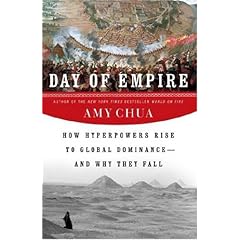 The Commonwealth Summit got underway this morning with an elaborate colourful ceremony of song and dance and then leaders got down to discussing the issues of the day. Reporters were not allowed in to either of these events so, in the meantime, we went to cover a visit by Secretary of State Helena Guergis and Edmonton MP Rahim Jaffer to a the Kawempe slum here in Kampala.
The Commonwealth Summit got underway this morning with an elaborate colourful ceremony of song and dance and then leaders got down to discussing the issues of the day. Reporters were not allowed in to either of these events so, in the meantime, we went to cover a visit by Secretary of State Helena Guergis and Edmonton MP Rahim Jaffer to a the Kawempe slum here in Kampala.
This is a tremendously poor area – with makeshift homes with no running water and no indoor plumbing — with a population of 332,000, roughly the size of metropolitan Windsor, Ont. The people we saw there were mostly children (left) who were very friendly abd curious about us and all of our gear and women. We saw only a handful of men over 20.
Guergis and Jaffer first visited the Little Stars school, a school of 400 students between 6 and 12 were they mostly learn about sanitation and the importance of sexual abstinence to prevent the spread of HIV and AIDs (bottom). The children, in fact, sang a song about washing hands for us. The African Medical and Research Foundation (AMREF), a Nairobi-based organization with a strong presence in Canada, provides some funding to the water and sanitation projects that help the school and the community it serves. The Canadian International Development Agency, the federal government department, provides some funding to AMREF.

Jaffer, who is engaged to Guergis (right, Guergis in red, Jaffer to her left), was born in Uganda but came to Canada when he was one-year-old after his family fled during Idi Amin’s reign. Jaffer told the schoolchildren how pleased he was that his country, Canada, was able to provide some help to his birth country. Jaffer still has some uncles who live in Kampala and visited some of them while he was here.
Guergis took some questions about Canada’s commitment to African aid. The Conservatives, in the last budget, committed to doubling Canada’s overall international assistance budget by 2010 compared to the 2001 level of $2.4–billion.
That commitment, though, sounds less impressive when looked at as a percentage of the country’s wealth. With government coffers overflowing with windfall revenues from high commodity prices, aid critics say we ought to be able to afford to do more. In 2005, the ratio of Official Development Assistance (ODA) to Gross National Income (GNI) was 0.35 per cent. You’ll remember Bono and others were trying to exhort Canada to raise that to 0.7 per cent. But even though the aid budget will double by 2010, the ODA/GNI ratio will actually drop to less than 0.29 per cent.

 The Canadian Forces Polaris carrying the Prime Minister, his aides, and reporters to the Commonwealth Summit left Nice, France after refueling just before 7 a.m. local time and we landed at Entebbe, Uganda around 4 pm local time. (left)We’d left the first snowfall of the year 18 hours earlier in Ottawa and walked into bright sunshine and 27 C weather in Entebbe. Entebbe, of course, was the scene of
The Canadian Forces Polaris carrying the Prime Minister, his aides, and reporters to the Commonwealth Summit left Nice, France after refueling just before 7 a.m. local time and we landed at Entebbe, Uganda around 4 pm local time. (left)We’d left the first snowfall of the year 18 hours earlier in Ottawa and walked into bright sunshine and 27 C weather in Entebbe. Entebbe, of course, was the scene of  In fact, the only time we saw Harper at all this day was when he got off the plane and got into a car to take him to the Kampala resort that all the leaders are staying in.
In fact, the only time we saw Harper at all this day was when he got off the plane and got into a car to take him to the Kampala resort that all the leaders are staying in. Lance Morrow reviews
Lance Morrow reviews Chua argues that all of the world-dominant powers in history — among them, Achaemenid Persia, imperial Rome, Tang Dynasty China, the Mongol empire, the Dutch commercial empire of the 17th century, the British Empire and hegemonic America — prospered by a strategy of tolerance and inclusion, the embrace (and exploitation) of diversity and difference.
Chua argues that all of the world-dominant powers in history — among them, Achaemenid Persia, imperial Rome, Tang Dynasty China, the Mongol empire, the Dutch commercial empire of the 17th century, the British Empire and hegemonic America — prospered by a strategy of tolerance and inclusion, the embrace (and exploitation) of diversity and difference.